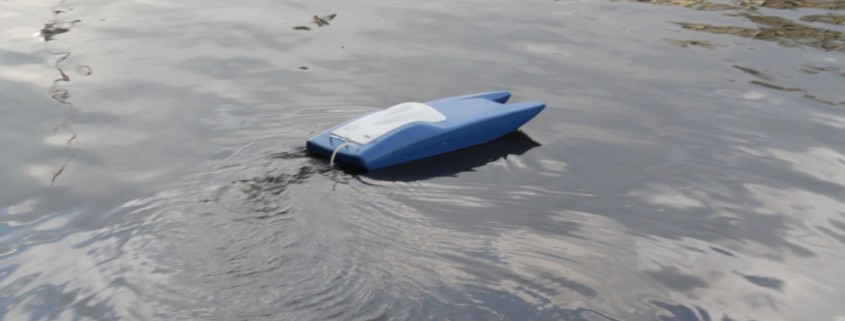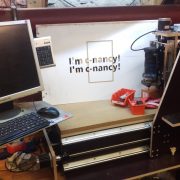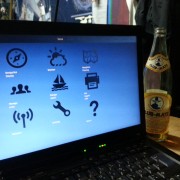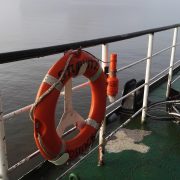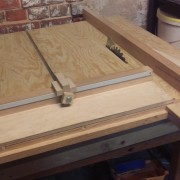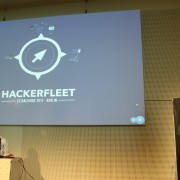Autonomous Unmanned Watercraft: MS0x00
Background
In 2011 my business partner Heiko Weinen and I founded together the Hackerfleet GmbH, a company that has developed open source software and hardware for ships and yachts. Since we could not afford a testing yacht at the time of establishment, we constructed an unmanned watercraft for testing our software and algorithms.
Task and Requirements
It was important that this project could be completed in a short term, as this project should serve only as a platform for software development. Therefore, we decided to buy a finished hull of a RC controlled model boat and to build on this foundation. The initial technical requirements were: extending the range of about 20 minutes at full speed to about 4 hours at full speed, expanding the battery capacity, so the control computer can operate 48 hours straight on one charge. Furthermore, sensors needed to be installed, we needed an accurate GPS, an Inertial Measurement Unit (9DOF = 3D Accelerometer, 3D Gyroscope, 3D compass), a sonic depth sensor, a barometric pressure sensor, a hygroscope, and a water temperature gauge.
Implementation
 For the on board computer we opted for a Pandaboard, an ARM-based development system. This has been installed together with the IMU (Interial Measurement Unit, 9DOF) in a waterproof case and is mounted slightly cushioned in the center of the boat.
For the on board computer we opted for a Pandaboard, an ARM-based development system. This has been installed together with the IMU (Interial Measurement Unit, 9DOF) in a waterproof case and is mounted slightly cushioned in the center of the boat.
We continued to use the motor, but modified the water cooling so that the voltage converter and the motor controller were also cooled by the coolant. Furthermore, the cooling system was supplemented by a pump that draws the water and pushes it through the system. In a waterproof casing in the rear of boat was the steering apparatus, the power distribution and a part of the voltage regulation systems. In this compartment we installed several fuses, which interrupt the power supply in case of possible short circuits to avoid damaging the expensive batteries. The rest of the sensors were distributed according to the individual requirements of each sensor in the fuselage and each was made waterproof with different means.
Test Missions
We conducted several test missions on the Spree and on the Baltic Sea as well as in a pool at the event “Chaos Communication Camp 2011”
The test mission to the Baltic Sea was conducted in a Bay in Southern Denmark called “Dyvig”. The decision was made for this bay on the one hand because of the good cover from all sides, on the other hand because of the easy accessibility for the yacht that we used for us, the test crew, and not least because of the poor availability of depth data for this bay.
The objective was to generate a depth map of the bay. This goal was not achieved, because during the last mission preparations on location, there was unfortunately an electrical short circuit that destroyed the voltage transformer for the depth sensor. Although the depth sensor was still intact (we even brought a replacement sensor), we were not able to produce the necessary voltage for it on board, because nobody thought about bringing a spare voltage transformer.
 There have been several test missions on the River Spree in Berlin-Mitte. We used these test missions to test and develop the water cooling system, to test various rudder and propeller configurations and also to test network communication
There have been several test missions on the River Spree in Berlin-Mitte. We used these test missions to test and develop the water cooling system, to test various rudder and propeller configurations and also to test network communication


